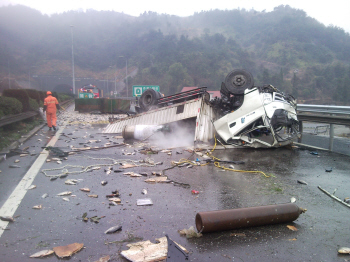How to prevent medical O2 cylinders from leaking
1. Leakage when the cylinder valve is closed
The leakage in the closed state of the cylinder valve is generally caused by the damage of the core of the valve or the damage or poor position of the safety piece. The sealing is not good, and the replacement of the valve core or the safety piece can be eliminated. This kind of air leakage is generally handled before the product leaves the factory. If users occasionally encounter this phenomenon, they can take it back to the production plant for replacement.
2. Air leakage in the open state of the cylinder valve
A common problem encountered by users is air leakage after the valve is opened. Air leakage after the opening of the bottle valve refers to the use process. After the unscrew of the bottle valve, oxygen flows to the welding and cutting torch in the hands of the workers along the pipeline, or to the patient's breathing along the pipeline, and some oxygen leaks from the cracks around the stem of the bottle valve. This phenomenon is more difficult to deal with, not only to master the internal structure of the bottle valve and sealing material performance, but also to have certain skills and skills. So users can't do it on their own. This paper focuses on the treatment and prevention of air leakage in the open state of the cylinder valve.
Treatment and prevention of air leakage in the open state of the cylinder valve:
Our medical oxygen cylinder valve is produced according to the technical requirements of "medical oxygen cylinder valve". There are a number of professional domestic production factories. According to the relevant provisions of GB10877, the medical oxygen cylinder valve "under 1.1 times the nominal pressure, the cylinder valve should be closed and open arbitrarily without leakage". Close and open arbitrarily without leakage, commonly known as the lower seal and the upper seal. The lower seal (tight air in the closed state) is completed by the valve core, and the upper seal (tight air in the open state) is completed by the gasket on the stem. In the case of intact gasket, the valve fully open (open) can ensure no leakage, but the user can not be fully open, just open a small point, it is difficult to ensure no leakage.
An accident caused by a leaking oxygen cylinder
How to avoid medical oxygen cylinder leakage
In order to prevent this phenomenon, part of the cylinder valve manufacturers in the big pressure cap in the through hole of the annular groove, installed on the O seal ring, in order to reduce the probability of air leakage.
Cylinder leakage problems are handled by periodic cylinder inspection stations attached to gas production plants (hereinafter referred to as "cylinder inspection stations"). Many cylinder inspection stations assume that the O-ring is combustible material and remove it from the annular groove of the large pressure cap. This is quite an error. There are three kinds of sealing materials on the cylinder valve, namely core, gasket and O-ring seal. Depending on where they are located, the purity of the oxygen they are exposed to varies, so their non-flammable nature is required to vary. The core is in contact with the pure oxygen of 15MPa in the bottle, which requires the highest non-combustible performance. It is made of tetrafluoroethylene and copper powder filler, which is difficult to oxidize and does not burn, and it can not be burned even if put on an open fire. The gasket is covered on the valve stem, above the core, the oxygen in contact with the leakage from the thread of the bottle core, the pressure has been reduced, the purity of oxygen has been reduced, and the requirements for the non-combustible performance of its material have also been reduced accordingly, generally made of nylon - 6 or polyethylene; O-ring on the gasket, oxygen pressure is lower, the requirements of the material is lower, flame retardant rubber can be generally used.






 Facebook
Facebook YouTube
YouTube LinkedIn
LinkedIn Twitter
Twitter